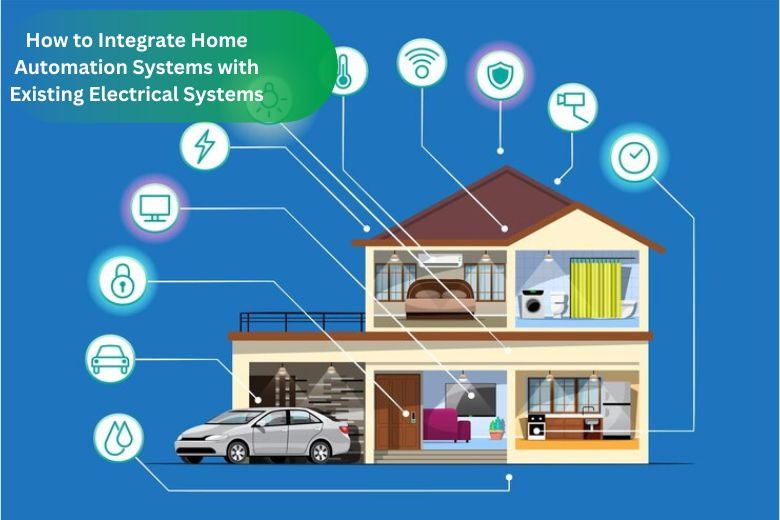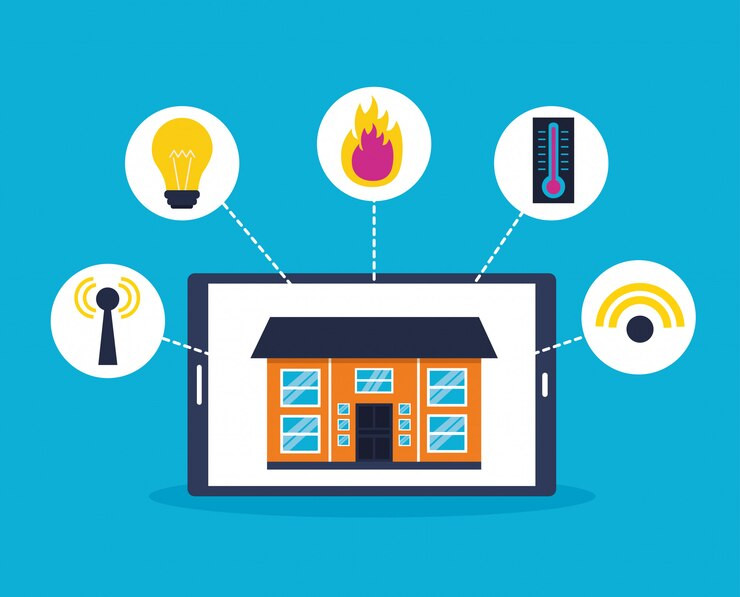How to Integrate Home Automation Systems with Existing Electrical Systems
Posted on September 16, 2024 by Admin

Installing the home automation systems in your existing electrical system is turning out to be the trend in today's era, considering efficiency, modernity, and making your living spaces smarter. By implementing the automation technology within your existing electrical setup, not only will you increase the functionality but also save energy and facilitate most simple chores of day-to-day routine. An experienced Electrician Service Provider can help ensure a seamless integration of home automation into your existing system. Here is how one can effectively integrate home automation systems into existing electrical systems.
1. Assess Your Current Electrical System
First, you must evaluate the existing electrical system, which basically means understanding all the major components in it, like the electrical panel, wiring, outlets, and switches. Ensure that you check whether the present system can support any added load and control requirements from the automation devices. Knowledge of the electrical infrastructure can give an idea of the best route to take regarding integration and also keep off some possible compatibility problems.
2: Choose the Proper Home Automation Platform
The proper home automation platform is key to any successful integration. Some of the most popular home automation platforms include Google Home, Amazon Alexa, and Apple HomeKit. All three vary with different features available and the options of compatibility to go with. You want to find a platform that matches your needs and supports your electrical systems in place. Ensure that it will also function with types of devices you want to connect: smart lighting, thermostats, security systems, or whatever you will.
3. Set Up a Smart Device and Controller
So, now that you've got your home automation platform picked out, it's time to start adding the smart devices and then devices to control other devices. Certainly in that list are some of the most common devices: smart switches, outlets, and dimmers. Replacing regular electrical fixtures with these devices is commonplace. Installation is done just like they are for non-smart fixtures, only with the added capability for integration with your home automation system. Smart switches allow remote control over the lighting, and smart outlets manage the power consumption for different appliances or electronic devices.
4. Integrate with Your Electrical Panel
Electrical panel integration will be well-suited to smart circuit breakers and/or energizing monitoring devices. Smart circuit breakers would mean remote control and monitoring of electrical loads, allowing better management of your electricity usage. Just be sure you get components installed by licensed electricians to not compromise electrical safety and to follow electrical codes.

5. Hub-Based Integration
Due to its aspect of integration, smart home hubs are going to ease things much. It is a central control unit of a wireless connect base that links several smart devices and integrates them into an existing electrical system. It allows for control of many different aspects in a home from one interface and automation of it. Hubs can bridge the gap with other protocols like Zigbee, Z-Wave, and Wi-Fi, allowing devices to communicate with each other and guaranteeing compatibility while linking them.
6. Automate Lighting and Climate Control
Two other areas that are going to hugely benefit from inclusion into home automation are lighting and climate control. Include in your home automation modern-day smart lighting solutions that would best allow control over scheduling, illumination, and color dimming from any remote location. Similarly, smart thermostats can optimize heating and cooling based on your preferences and schedule. You can conveniently control both systems from your home automation platform to enhance comfort with energy savings.
7. Ensure Secure Integration
This leads to another very important aspect of integrating a home automation system: security. This, of course, can be partly taken care of through setting strong passwords, enabling encryption, and keeping firmware updated. Many automation platforms offer such security features as two-factor authorisation and alerts in a situation of unauthorized access. Good security measures protect your home automation system against hacking or other unauthorized controls.
8. System Testing and Optimization
Now that your smart home has been set up, test all the systems to ensure that all devices work in tandem as expected. Make sure that each device correctly responds to the commands given, that controls on automation scheduling function as expected, and that displayed energy monitoring is up to date. Further calibration is to be made to optimize performance and solve any problems that arise. Review and make necessary changes to your automation settings so they match the situation and changes in lifestyle or preference.
Also Read :
How to Finance Your Roof Replacement: Loans, Grants, and Insurance
Roof Safety Tips for Homeowners
The Impact of Algae and Moss on Your Roof
How to Deal with Roof Leaks During a Storm
How to Create an Electrical Maintenance Plan for Your Home
The Benefits of Green Roofs for Urban Homes
How to Finance Your Roof Replacement: Loans, Grants, and Insurance
Faqs
-
1. What is home automation, and why would I want to integrate it with my existing electrical system?
Home automation is using technology to allow for remote or automatic control over various systems in the home. Integrating it into your existing electrical system enhances convenience, improves energy efficiency, and gives centralized control over the functions of a house.
-
2. How do I choose a home automation platform that will work with my current system?
Make sure to choose one that suits and works well with your current electrical setup and accomplishes what you want it to do. Some big ones include Google Home, Amazon Alexa, and Apple HomeKit. Be sure that it supports the kinds of devices you'd like to integrate and has features aligned with your preferences.
-
3. How do I secure my home automation system against threats?
Secure your home automation by setting up strong passwords, enabling encryption, and regularly updating the firmware of devices. Enable features that enhance security, such as two-factor authentication and checking access logs for any suspicious activity. Keeping your system secure will help defend against possible cyber threats.
-
4. What are some common issues that may arise during integration, and how do I troubleshoot them?
Common issues include device incompatibility, connectivity problems, and automation schedules set incorrectly. Ensure the compatibility of devices with your platform and network connections and check the settings of the devices. You can also refer to the user manual or seek professional help if needed.
Recent Post
- Top Plumbing Service Providers in Arizona, USA
- Top 10 Electrician Service Providers in Alabama, USA
- Top 20 Roof Repair Service Providers in Alabama, USA
- The Role of Roof Insulation in Energy Efficiency: Tips and Tricks
- Understanding Roof Damage from Wildlife and How to Prevent It
- How to Choose the Best Roofing Contractor for Emergency Repairs
- Roofing Maintenance for Historic Homes: Preserving Architectural Integrity
- The Importance of Proper Attic Ventilation for Roof Health
- How to Identify and Prevent Roof Mold and Mildew
- The Best Practices for Removing Snow from Your Roof